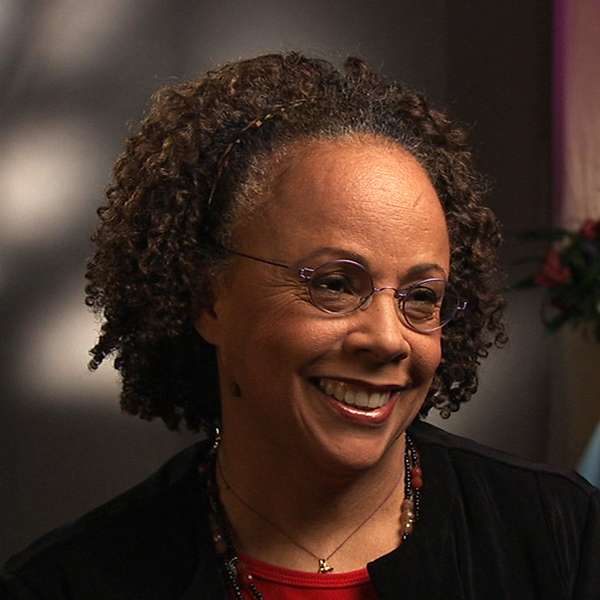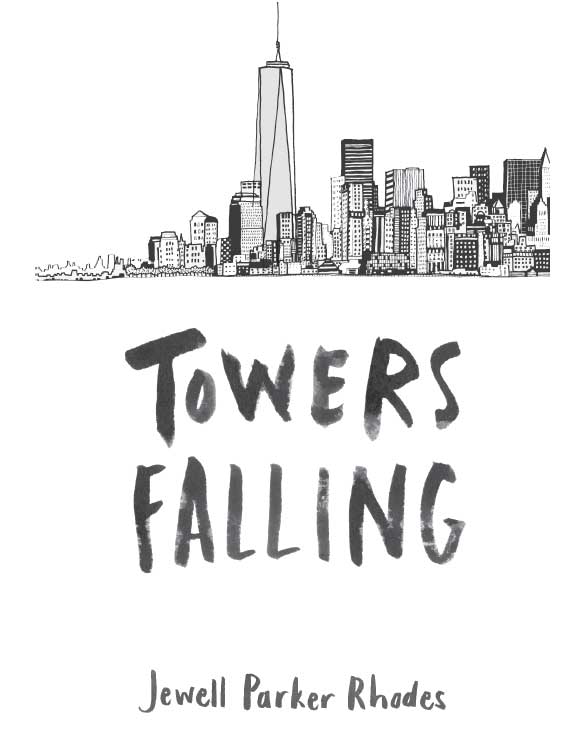Jewell Parker Rhodes writes children’s novels about tough subjects. The best-selling author had tackled slavery, the BP oil spill and Hurricane Katrina, but there was one challenge she hadn’t taken on: the terror attacks of Sept. 11, 2001.
It had been more than a decade since the tragedy when Rhodes got an idea for a 9/11 story that she said “stayed in my soul.”
Jewell Parker Rhodes
Her initial reaction, and early advice from family and friends, had been to stay away. The topic seemed too raw, intense and emotional for young readers. But on a long flight, Rhodes said she began to feel a connection to the people on the hijacked planes and developed the story that would become her latest book, “Towers Falling.”
Timed for the 15th anniversary of the attacks, the story for young readers takes a fictional fifth-grade class through lessons about one of the defining moments of modern history. Rhodes said she hopes “Towers Falling” can be a tool for educators and parents to guide discussions with children.
“Students are the citizens of tomorrow and need to be taught how 9/11 affected our world,” said Rhodes, artistic director of Arizona State University's Virginia G. Piper Center for Creative Writing and writing professor in the Department of English in the College of Liberal Arts and Sciences.
“We’re now seeing the impacts of terrorism and how it has become even more widespread since 9/11. Do we really want to wait 30 years from now to teach the people who are going to have to live with this?”
To get the book done, Rhodes had to sensitively introduce young readers to an attack that killed more than 3,000 people, including hundreds of police and firefighters, and triggered a massive counter-terror response from the U.S. government. She also had to craft a story that teachers could teach, something that conveyed both shocking devastation and the ultimate triumph of American resilience and ideals. She wanted to make the grim moment into a story that could inspire young people to become good citizens.
She said it came together when she was “cocooned on a 14-hour plane flight.”
“It was a midnight flight and everything was dark save for a reading light,” Rhodes said. “Being in that space and spiritually connecting with the people on those planes brought it into focus for me.”
A possible approach as well as the title popped inside her head. For Rhodes it was “a sign that I should try and write this book.”
Rhodes wanted input from fellow teachers, so she consulted the principal and other staffers at the Brooklyn New School, PS 146, who witnessed the two planes flying into the World Trade Center through their school windows. The educators said they were still traumatized by the crashes, which left the school coated in debris and ashes, and the sudden realization that family members and friends worked in the twin towers. Even years later, many still couldn’t discuss it with their students, some of whom asked, “What happened?” and “Where are those buildings?”
Rhodes also discovered through classroom visits around the country that lessons on 9/11 varied widely and that many teachers had avoided the topic altogether.
Part of the trepidation had to do with age: At what point is it appropriate for young people to learn about a troubled chapter of recent history?
“It depends,” said Amanda Vickery, assistant professor of elementary social studies at ASU’s Mary Lou Fulton Teachers College.
“It can be taught at the elementary level, but it has to be done in an age appropriate way that doesn’t focus on fear but teaches about bravery, citizenship, resilience and the human spirit,” she said.
Vickery said teachers aren’t eager to venture into such territory because they want to “preserve and protect the innocence of the child.”
In Arizona, current state social studies standards do not call specifically for lessons on 9/11 or contemporary terrorism. That doesn’t mean, however, it’s not being taught, said Kenneth De Masi, past president of the Arizona Council for the Social Studies.
“Many teachers are challenged in placing Sept. 11 in the context of world history,” said De Masi, who has taught social studies for the last four decades. “It is simply a question of when to do it, how to do it, for how long and who should do it? I know some people in our society that I would not want to be teaching my grandkids 9/11 or terrorism in general.”
That doesn’t appear to be the case with Rhodes, who has received widespread support for the project.
“Jewell is a very magical person, and she has the presence of an angel,” said Sid Reischer, a fifth-grade teacher at Castleton Elementary in upstate New York. Reisher received advance copies of “Towers Falling” from publisher Little, Brown Books as part of his yearlong study of 9/11. Reisher read it to his students in April while Rhodes participated through Skype.
The reading became “an avenue for students to have a conversation with their parents about 9/11 as part of their homework,” Reischer said. He said other student outcomes included a “feeling of connection to the country as a whole, a deep appreciation for first responders and what it means to be an American.”
Reischer said “Towers Falling” affected parents, many of whom had personal connections with people who died that day.
“For the kids to see the emotional impact it had on the parents was very valuable and an important piece,” Reischer said. “It showed that history is alive and well and is about people. We had very rich conversations about the subject for the next few days.”
Reischer’s study will culminate with a visit from Rhodes. She will travel to the 9/11 Memorial to meet with about 75 Castleton students on Sept. 9, to memorialize the attacks.
“The idea that Jewell will come and meet us there makes this a once-in-a-lifetime experience for these kids,” Reischer said. “When does an author do that? It’s amazing if this all comes off.”
“Towers Falling” is set for release Tuesday, July 12.
More Arts, humanities and education

‘It all started at ASU’: Football player, theater alum makes the big screen
For filmmaker Ben Fritz, everything is about connection, relationships and overcoming expectations. “It’s about seeing people beyond how they see themselves,” he said. “When you create a space…

Lost languages mean lost cultures
By Alyssa Arns and Kristen LaRue-SandlerWhat if your language disappeared?Over the span of human existence, civilizations have come and gone. For many, the absence of written records means we know…

ASU graduate education programs are again ranked among best
Arizona State University’s Mary Lou Fulton College for Teaching and Learning Innovation continues to be one of the best graduate colleges of education in the United States, according to the…




